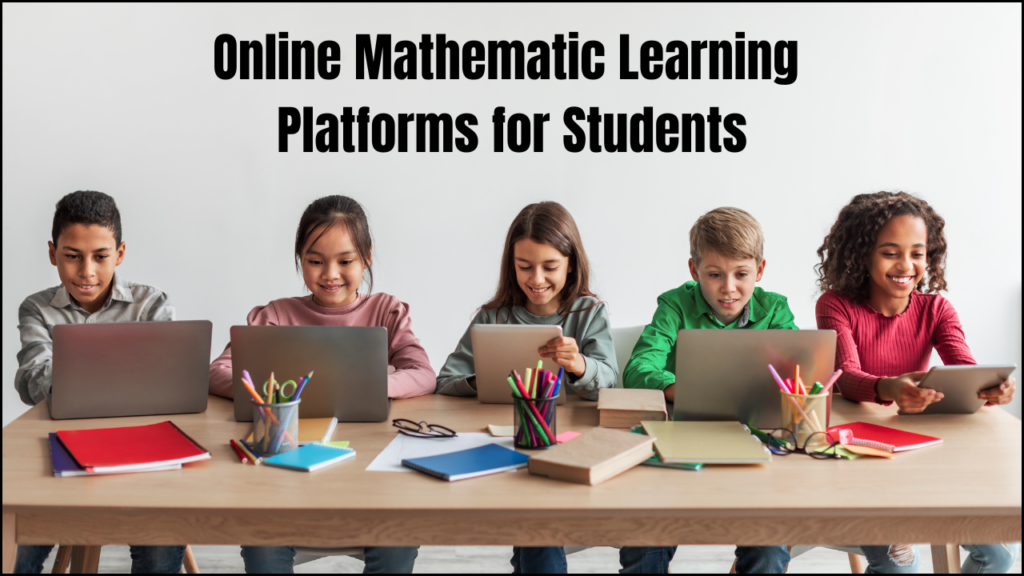
In today’s digital era, online mathematics learning platforms have revolutionized the way students approach the subject. These platforms offer personalized learning experiences tailored to individual needs, making math more accessible and engaging. This analysis explores various perspectives on online math learning, highlighting the benefits, challenges, and practical applications of these resources.
Benefits of Online Mathematics Learning Platforms
- Personalized Learning Paths: Online platforms like Ascend Math and Unlock Math offer customized study plans that adapt to each student’s pace and skill level. This individualized approach helps students focus on areas where they need improvement, promoting better understanding and retention.
- Accessibility and Flexibility: With an internet connection, students can access math resources anytime and from anywhere. This flexibility is especially advantageous for students in remote areas or those with busy schedules, allowing them to learn at their convenience.
- Interactive and Engaging Content: Platforms such as Can Figure It and ST Math use interactive games and visual aids to make learning fun. These elements capture students’ interest, reducing math anxiety and increasing motivation.
- Instant Feedback and Progress Tracking: Websites like Mailchi MP and Xtra Math provide real-time feedback, helping students quickly identify and correct mistakes. This immediate feedback loop accelerates the learning process and builds confidence.
- Wide Range of Resources: From video tutorials on YouTube to interactive quizzes on Reflex Math, the variety of resources available caters to different learning styles. This diversity ensures that students can find methods that suit their preferences.
Challenges of Online Mathematics Learning Platforms
- Lack of Personalized Guidance: Despite the adaptive nature of these platforms, the absence of a live instructor can make it difficult for students to receive personalized explanations, especially for complex topics.
- Potential for Distraction: The game-based elements of platforms like Prodigy Game and TT Rock Stars may sometimes lead students to focus more on gameplay than on learning, reducing the effectiveness of the platform.
- Technology Access and Connectivity Issues: Not all students have reliable access to devices or high-speed internet, limiting their ability to benefit from online learning.
- Limited Social Interaction: Online learning lacks the collaborative environment of a traditional classroom, which can hinder the development of communication and teamwork skills.
Comparative Overview of Key Platforms
| Platform | Target Age Group | Key Features | Unique Benefit |
|---|---|---|---|
| Can Figure It | K-12 | Interactive and visual learning | Ideal for visual learners |
| Ascend Math | K-12 | Personalized study plans and progress tracking | Adapts to individual learning needs |
| Mailchi MP | College | Adaptive system with instant feedback | Helps with advanced math concepts |
| Xtra Math | K-6 | Foundational math fluency through practice drills | Builds speed and accuracy in basic math |
| Unlock Math | Grades 6-12 | Comprehensive content aligned with curricula | Structured syllabus for different grade levels |
| ST Math | K-8 | Visual instructional approach | Enhances problem-solving and logic skills |
| Prodigy Game | Grades 1-8 | Game-based learning with curriculum integration | Makes math fun and engaging |
| TT Rock Stars | K-6 | Timed games for multiplication and division | Reinforces arithmetic fluency |
| Reflex Math | Grades 2-6 | Fun games to improve basic math operations | Boosts confidence in math skills |
| YouTube | All ages | Video tutorials covering a range of math topics | Free and accessible visual learning |
Different Perspectives on Online Math Learning
- Students’ Perspective: Students appreciate the flexibility and engaging content of online platforms. Game-based learning motivates younger students, while instant feedback helps older students prepare for exams.
- Teachers’ Perspective: Teachers use these platforms to supplement classroom instruction. Tools like Ascend Math allow educators to track students’ progress and provide additional support where needed.
- Parents’ Perspective: Parents value the accessibility and affordability of online resources, which can serve as an alternative to expensive private tutoring. Platforms like Reflex Math help children develop essential math skills at home.
- Educational Institutions’ Perspective: Schools increasingly integrate online platforms into their curricula to enhance student engagement and improve math outcomes. Platforms like ST Math are particularly effective in developing problem-solving skills.
Tips for Maximizing the Benefits of Online Math Learning
- Set Clear Learning Goals: Establish specific objectives to maintain focus and measure progress.
- Maintain a Balanced Approach: Combine online learning with traditional methods to ensure comprehensive understanding.
- Monitor Progress Regularly: Use progress-tracking features to assess improvement and adjust learning strategies as needed.
- Create a Distraction-Free Environment: Ensure that students use educational platforms without being tempted by non-educational content.
Frequently Asked Questions (FAQs)
1. Which platform is best for elementary students?
Ans: Prodigy Game and ST Math are excellent choices due to their interactive and game-based approaches, making math fun and engaging.
2. Can online platforms help with advanced math concepts?
Ans: Yes, platforms like Mailchi MP offer comprehensive lessons and feedback for subjects like Calculus and Statistics.
3. Are online math platforms suitable for classroom use?
Ans: Absolutely. Teachers can integrate platforms like Ascend Math into their lessons to provide personalized support and track students’ progress.
Conclusion
Online mathematics learning platforms have transformed math education by making it more accessible, engaging, and personalized. While challenges such as limited guidance and potential distractions exist, the benefits of flexibility, instant feedback, and interactive content far outweigh the drawbacks. By choosing the right platform and using it effectively, students, teachers, and parents can unlock the full potential of online math learning, paving the way for academic success and a deeper understanding of mathematics.